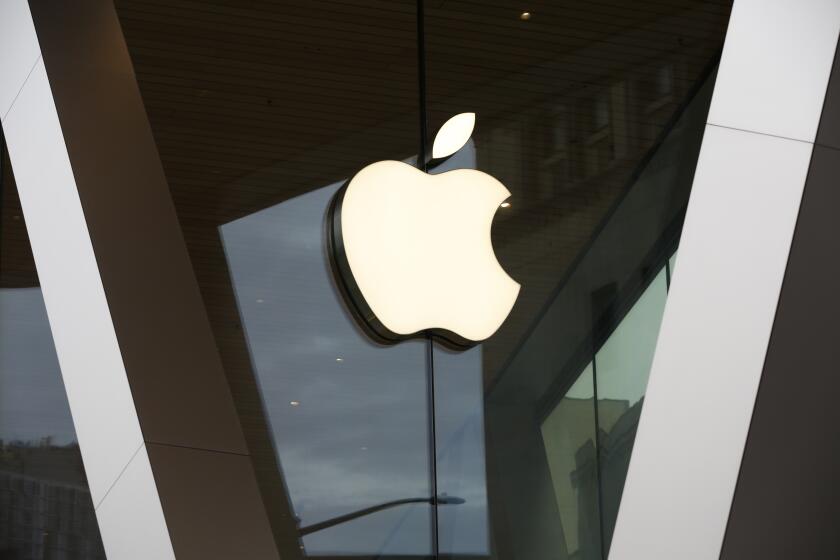‘Intellectual Disneyland’ Will Feature Silicon Valley Wizardry
- Share via
SAN JOSE — See your heart pumping with an ultrasonic viewer. Beam your voice around the world via satellites and hear it bounce back a second later. Gaze billions of years into the past through a monitor to an orbiting space telescope.
Those are among dozens of imaginative exhibits planned for a new museum in the center of the West Coast’s high-technology belt, the so-called Silicon Valley on the southern end of the San Francisco Peninsula.
“We want to build a place full of fun and flavor, where you can have a really good time--an intellectual Disneyland,” Executive Director Eustace Mendis said.
“It’s being put together by people like me who never grew up, who still have curiosity, a sense of adventure and excitement,” said Mendis, who until recently was the chief scientist at the popular Ontario Science Center in Toronto.
The idea for a high-tech center featuring the wizardry of the Silicon Valley, started with a housewife, caught the imagination of industry leaders and turned into a lucrative project fought over by three cities.
San Jose recently won the bidding war, competing against neighboring Mountain View and Sunnyvale, with a pledge of $33 million for construction and landscaping and $2 million a year for operations.
A prestigious board of directors, headed by San Jose Mercury News Publisher P. Anthony Ridder, is raising more money while studying architectural designs and exhibition ideas.
The $96-million Technology Center of Silicon Valley is expected to attract at least 1 million visitors a year.
The board hopes to open the center by the fall of 1988, 11 years after Carol Schwartz of Menlo Park proposed the idea to her Junior League chapter.
After visiting Chicago’s Museum of Science and Industry in 1977, Schwartz suggested a similar center focusing on the computer, electronics and bioengineering breakthroughs of Silicon Valley companies and universities.
The Chicago museum, she thought, was “too industry-oriented” but was “on the right track.” She wanted to combine it with the hands-on, let-me-try-that type of exhibits at San Francisco’s Exploratorium--a sprawling warehouse of gizmos showing off the world of physics.
“Science plus industry equals technology,” she said. “And that’s appropriate for this area.
“We want to attract children because they’re the future of the industry,” she said. “But it also has to be a place where scientists and business people can go to have some of their questions answered. So, there will be exhibit rooms, auditoriums and lecture halls.”
The Junior League supports the development of the center, but the project’s evolution is largely in the hands of Mendis and President James L. Adams, a professor of mechanical and industrial engineering at Stanford.
Adams, author of “Conceptual Blockbusting” about problem-solving, also worked on the first Venus and Mars spacecraft in the 1960s.
The center will have some permanent exhibits that deal with the history of technology but is committed to staying on the cutting edge of innovation with an anticipated annual operating budget of $7 million.
“We set ourselves a target of renewal of 10% of the exhibits a year,” Mendis said.
The Silicon Valley center will strive to avoid being a trade show for local companies.
“We have no intention of being a parochial institution focusing only on Silicon Valley,” he said. “The thrust will be on why things work, and we will get into dozens of areas, including medicine, food and agriculture, sports, communications, structures, transportation, computers, space.
“We want people to explore the real world of technology. Some things will be bright, warm and pleasant. Some will be loud, dirty or smelly. We’re not whitewashing or making technology antiseptic.”
In predicting more than a million visitors a year, Mendis said he thinks that the center will be one of the major tourist stops in the San Francisco Bay Area, along with Marine World, the Great America amusement park, the Monterey Aquarium and the many museums in San Francisco.
“We expect to draw people from all over the world,” Mendis said. “Probably 70% will come from the Bay Area, and 30% will be visitors. This will provide a focal point for tourists in Silicon Valley.”
The Ontario Science Center in Toronto is one of the leading tourist attractions of that Canadian city, attracting more than 1 million visitors a year. It has many hands-on and computer-controlled exhibits and is open every day of the year except for Christmas Day. Its annual budget exceeds $11 million.
More to Read
Inside the business of entertainment
The Wide Shot brings you news, analysis and insights on everything from streaming wars to production — and what it all means for the future.
You may occasionally receive promotional content from the Los Angeles Times.










